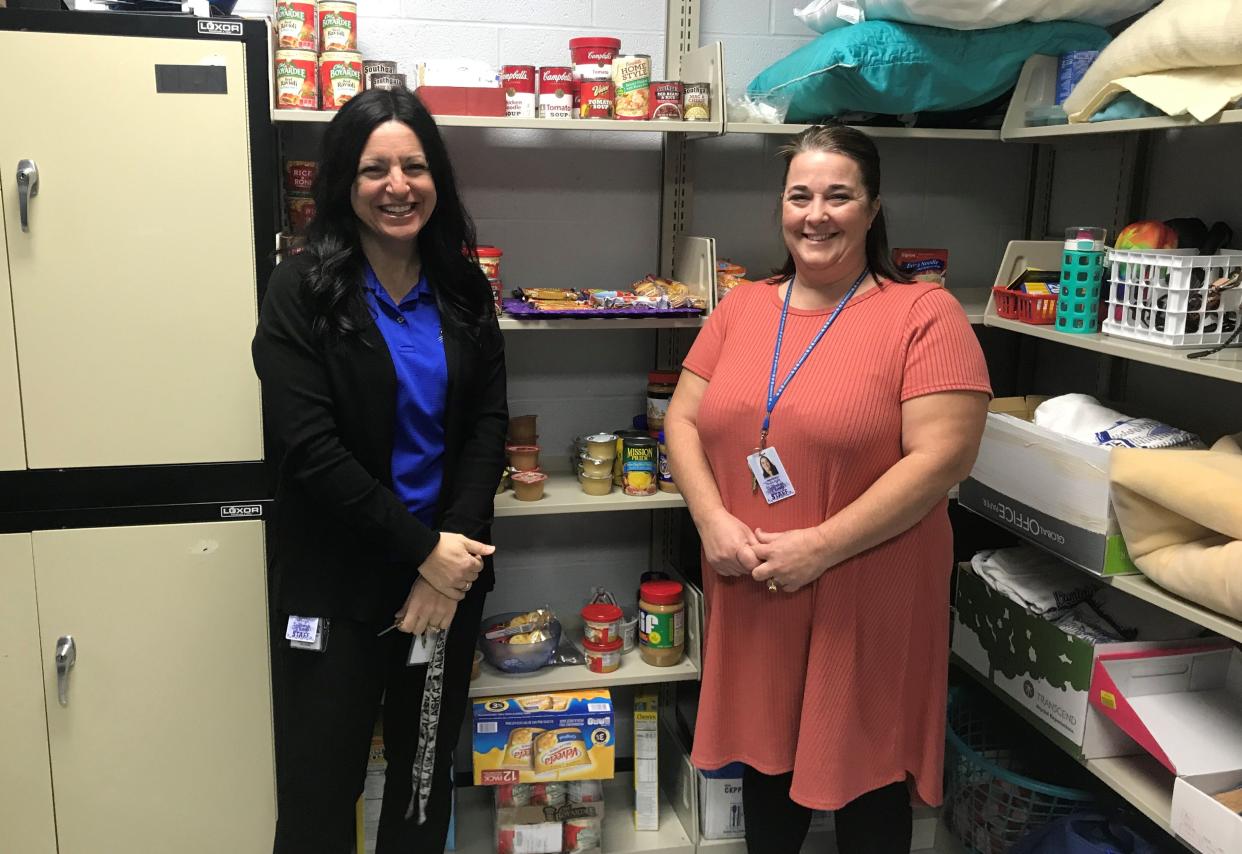Student support liaisons create safe spaces for students

Student support liaison is a position title that may generate more questions than other positions within a school district. In reality, the general title is pretty accurate, as the two student support liaisons in the Cambridge City School District do not have a limited or specific job description.
Casey McVicker at the high school and Heather Roberston at the middle school have a broad array of responsibilities on what appears to be an ever-growing list.
While the job description includes tasks like coordinating services, scheduling meetings, and facilitating the completion of paperwork, most of what they do falls under that all-inclusive phrase, “other duties as assigned.”
“Anything I can think of to help a student be successful is basically my job,” Robertson said. “We have to assist our students to navigate stressors in their life,” McVicker added.
Often, students who are struggling academically are struggling because of other issues or are experiencing stress in their lives. The stress might be easy to recognize and address, such as hunger or a physical issue like a toothache. Unfortunately, stressors often fall under the umbrella of mental health.
Anxiety is a big issue, especially at the middle school, where students encounter several significant changes and new experiences. They are learning to navigate the differences between teachers and what different teachers expect. A new building also causes stress for freshmen attending high school for the first time, especially during a pandemic.
“When a student presents with anxiety, we go over the physical first: did they eat breakfast, is there a change in their sleep patterns? Are they hydrated? Do they smoke or vape outside of school?” McVicker said. It is a list of questions that helps students understand what other factors may also be contributing to their increased anxiety.
With parent consent, McVicker can arrange for a student to talk with a licensed mental health or substance abuse professional who can address any mental, emotional, or substance abuse needs students may have.
The recharge room at CHS is also available for students who need a calm, quiet space to work on coping skills or to self-regulate their emotions outside of the classroom setting.
McVicker also co-facilitates a life skills group during lunch periods and offers assistance for identified McKinney Vento (homeless) students and families at CHS.
At the middle school, Robertson has created several groups to help students. She is involved with study groups where students who are struggling can get extra academic help, learn study skills, and understand how learning in middle school is different than learning in elementary school.
She also provides fidgets for students who need a quiet distraction or way to distress while they are in class and organized a Good Morning, Sunshinegirls’ group to touch base with female students who may need support or help with their coping skills.
At Spark Plug group, students can talk about what sparks their fire and share what they are passionate about. They also address goal setting and learn organization skills that may help them reach those goals.
McVicker and the rest of the student support team, including school counselors, also created a safe space at the high school and gained the trust of the students.
Providing help and support makes that student support liaison job title extremely broad.
Submitted by Cambridge City School District
This article originally appeared on The Daily Jeffersonian: Student support liaisons create safe spaces for students

